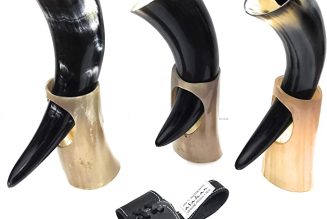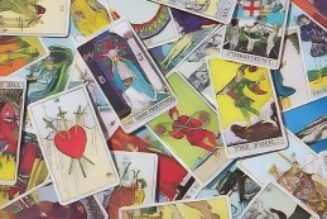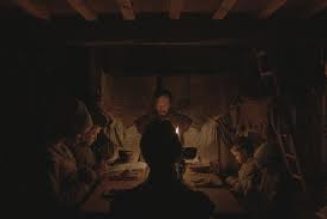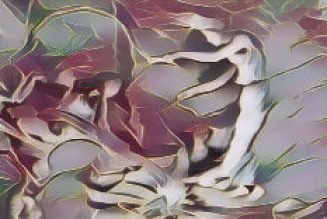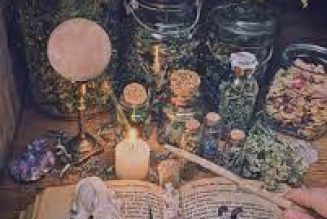Margaret Murray was a pioneering Egyptologist, archaeologist, anthropologist, folklorist, and a trailblazing first-wave feminist.
She gained lasting fame for her influential books on witchcraft, which played a crucial role in shaping modern Wicca.
While some of her theories have been debunked, her impact on both academia and modern paganism remains significant.
So how did Margaret Murray go from being the world’s foremost authority on witchcraft to a footnote in its history? And why doesn’t anyone talk about her work anymore?
Murray believed that witchcraft did exist. And that it was an organized religion—a fertility cult that worshipped a horned god.
In nineteen twenty-one, she expanded on the witch-cult theory in her book, The Witch-Cult in Western Europe.
Based almost entirely on witch trial documents from the sixteenth and seventeenth century,
Murray’s hypothesis was that witchcraft pre-dated Christianity and was eventually absorbed into it, the horned god becoming an avatar for Satan
Murray was the first to use the word ‘coven’ to mean a gathering of witches; she insisted that covens met in groups of thirteen, writing in detail about ‘sabbaths,’
specific witches’ meetings that involved elaborate rituals, including group sex and the occasional blood sacrifice.
This was, at the time, revolutionary information. (gap: 4s) The book was met with widespread acclaim and some incredulity.
In nineteen twenty-nine, she wrote the Encyclopedia Brittanica entry for ‘witchcraft,’ which stayed in print in one version or another for forty years.
For years, she was considered the only authoritative voice on the subject. Aldous Huxley was a fan
Despite being a non-believer who only wanted to write about witchcraft to strip away its supernatural reputation, The Witch-Cult in Western Europe would become a cornerstone of a newly-emergent religion when it was picked up by founding father Gerald Gardner and built on in his nineteen fifty-four book, Witchcraft Today.
Gardner took Murray’s witch-cult theory and used it as a framework on which to hang his other influences— Aleister Crowley’s writings, his own personal occult experiences, Freemasonry— to formulate a contemporary pagan religion. We now know it as Wicca.
Murray was born in eighteen sixty-three in Calcutta, India, into a middle class family of British heritage.
India was then a British colony, and career prospects for women like her were few- Volunteer, charity or mission work.
Her mother, also named Margaret, had served as a missionary before she was married, traveling the country by herself in a period when it was unusual to do so.
This would be a formative influence on Murray.
When she was seven, she and her sister were sent to England to stay with her uncle John, who was a vicar.
He believed that women were naturally inferior and should be morally and physically spotless.
John Murray’s views were pretty normal for Victorian England, and he thought it was a good idea to quote Bible verse supporting that at his prepubescent niece.
In her memoirs, Murray called her uncle a ‘Dominant Male,’ which was probably her own polite shorthand for ‘Rampaging Sexist.’
Her uncle did influence her profoundly in one aspect, though. (gap: 4s) He introduced her to archaeology.
Despite no formal education, and after returning to Calcutta and working as a nurse for several years, Murray decided, in her thirties, to pursue her childhood passion.
With her mother’s encouragement, she moved to London and started studying egyptology under pioneering archaeologist Flinders Petrie. Her ascent was steep— in eighteen ninety-eight she became the first female lecturer in archaeology in the United Kingdom.
She took part in several archaeological digs in Egypt and published multiple papers and books on the subject.
Sheppard notes that Murray unwrapped a mummy in front of an audience of over five hundred people in 1908— again, the first woman to do so.
Murray was successful and well-respected by her peers.
She was a member of Emmeline Pankhurst’s WSPU, and marched to secure women’s right to vote.
And then World War One happened.
In 1914, Murray and her colleagues were unable to return to Egypt to continue their archaeological digs.
Murray volunteered as a nurse for the war effort, but became sick and was sent to recuperate in a small town in Somerset—Glastonbury.
Glastonbury was the legendary home of King Arthur’s Holy Grail. (gap: 4s) And a nexus point for folk tales of the occult.























![Covensense by Crowther, Patricia [Paperback]](https://i.ebayimg.com/images/g/k8MAAeSwzcZofgmE/s-l225.jpg)
















